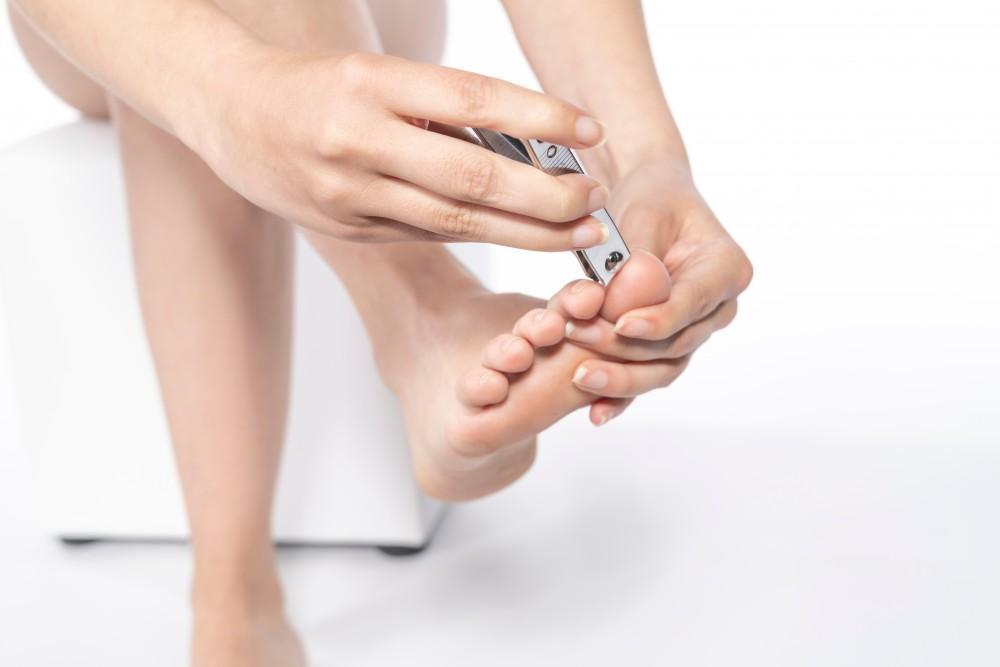
Your Summer Guide to Preventing Athlete's Foot

When the summer sun starts to blaze, it’s normal to want to be outdoors, active, and as unencumbered as possible. For many, that means throwing off their shoes or sandals and cooling off in places like swimming pools and the waves at the beach. Unfortunately, going barefoot in public places raises your risk for an unsightly and uncomfortable foot infection called athlete’s foot.
While you may have thought that athlete’s foot only happens to people with sweaty feet, it’s actually caused by a highly contagious fungus. In fact, athlete’s foot is caused by tinea fungus—the same kind of fungi that cause jock itch and ringworm.
And though it’s called athlete’s foot, you can easily spread the fungus to other parts of your body, too. To save you the discomfort and embarrassment of the red, itchy lesions and blisters of athlete’s foot, the expert podiatrists at Family Foot and Ankle Center of South Jersey offer the following tips:
Use shower or beach sandals
Oh, the grass feels great on the soles of your feet and the sand on the beach tickles the inside of your toes. But going barefoot outdoors or in public spaces not only raises your risk for athlete’s foot, but also for other nasty infections, including worms.
Get a pair of supportive, high-quality, waterproof beach sandals or high-grade flip-flops and wear them whenever you’re in an athlete’s foot breeding ground, such as:
- Gyms
- Swimming pools
- Saunas
- Steam rooms
- Locker rooms
- Outdoor fountains
- Bathrooms and showers
- Beaches
Get the right shoes
Wearing shoes that are too tight or composed of non-breathable materials can make your feet sweat. Creating a hot, moist environment like that is basically throwing out a welcome mat for tinea. If you’re not sure about what kinds of shoes are healthiest for your feet, come to Family Foot and Ankle Center of South Jersey for a consultation.
You should also avoid wearing the same pair of shoes every day. Alternate shoes at least every day or two to allow each pair to air out and become less hospitable to athlete’s foot fungi.
Pay attention to socks
Always wear socks with sneakers or shoes and look for a synthetic fabric that wicks moisture away from your feet. Your aim is to create a dry and cooling environment that’s inhospitable to fungi.
Make sure your socks are clean and change them at least once a day. Also, change your socks after sweating.
Look at those feet!
They’re marvelous structures, aren’t they? Appreciate your feet every day. And be on the lookout for unpleasant changes, such as scaly or reddened patches. If you think you might have developed athlete’s foot or another condition, call Family Foot and Ankle Center of South Jersey for an evaluation.
Keep them clean
Don’t forget to pick up your feet when you’re in the shower and give them a thorough scrubbing—including between your toes. Washing your feet at least daily with soap and water not only removes fungi-friendly sweat and dirt, it can wash off the fungi, too, before they cause damage. Don’t forget to dry your feet and cover them with lots of moisture-absorbing foot powder!
Treat your athlete’s foot
Uh oh. You read this blog too late and you’re already itching. No worries. Plenty of over-the-counter (OTC) athlete’s foot treatments can help dry out your feet and alleviate symptoms. If you have a bad infection, or if OTC treatments don’t help, the pros at Family Foot and Ankle Center of South Jersey can resolve your infection with oral, topical, or combination antifungals.
Treat your shoes
If you treat your athlete’s foot, you could infect yourself again if your shoes, sneakers, or sandals are teeming with the nasties. Douse them with anti-fungal sprays or powders. The podiatrists at Family Foot and Ankle Center of South Jersey can also disinfect your footwear with UV light.
Don’t share!
Sorry. When it comes to athlete’s foot, mom and dad were wrong. Sharing shoes, shocks, and even towels with a friend, loved one, or a stranger raises your risk for catching athlete’s foot.
Wash your hands after scratching
While you’re waiting for your athlete’s foot to heal, it might be hard to resist the urge to scratch. Do it gently, if you must, and then thoroughly wash your hands directly afterward with soap and water. Neglecting this step could spread the fungus to another part of your body. Ouch!
See the podiatrist
If, despite these steps, your athlete’s foot persists, or if you get recurrent infections, contact the Family Foot and Ankle Center of South Jersey podiatrists for help. You can reach the friendly Family Foot and Ankle Center of South Jersey team by phone or booking an appointment online.
You Might Also Enjoy...


5 Ways to Keep Your Bunion Pain to a Minimum

Gout: What Is It and How Can I Get Rid of It?

Complications of an Untreated Ankle Sprain

Suspect You’ve Broken Toe? How To Tell and What to Do


